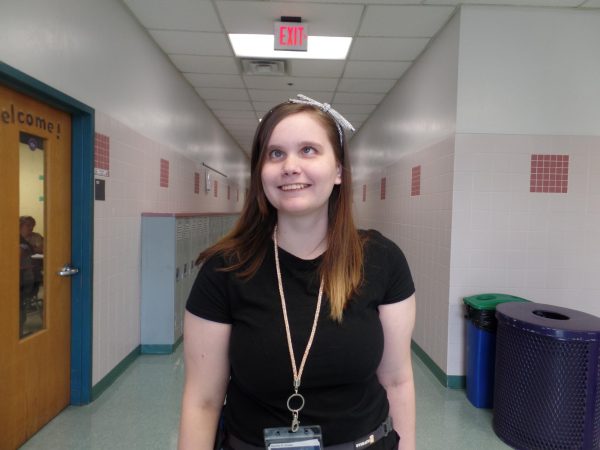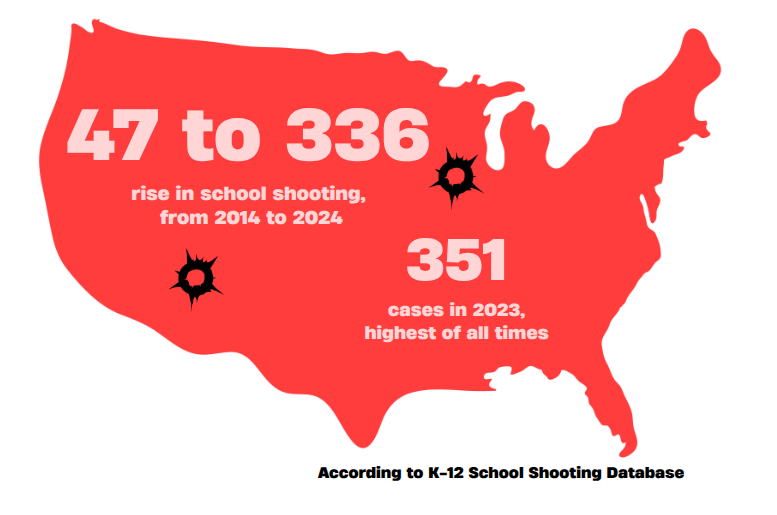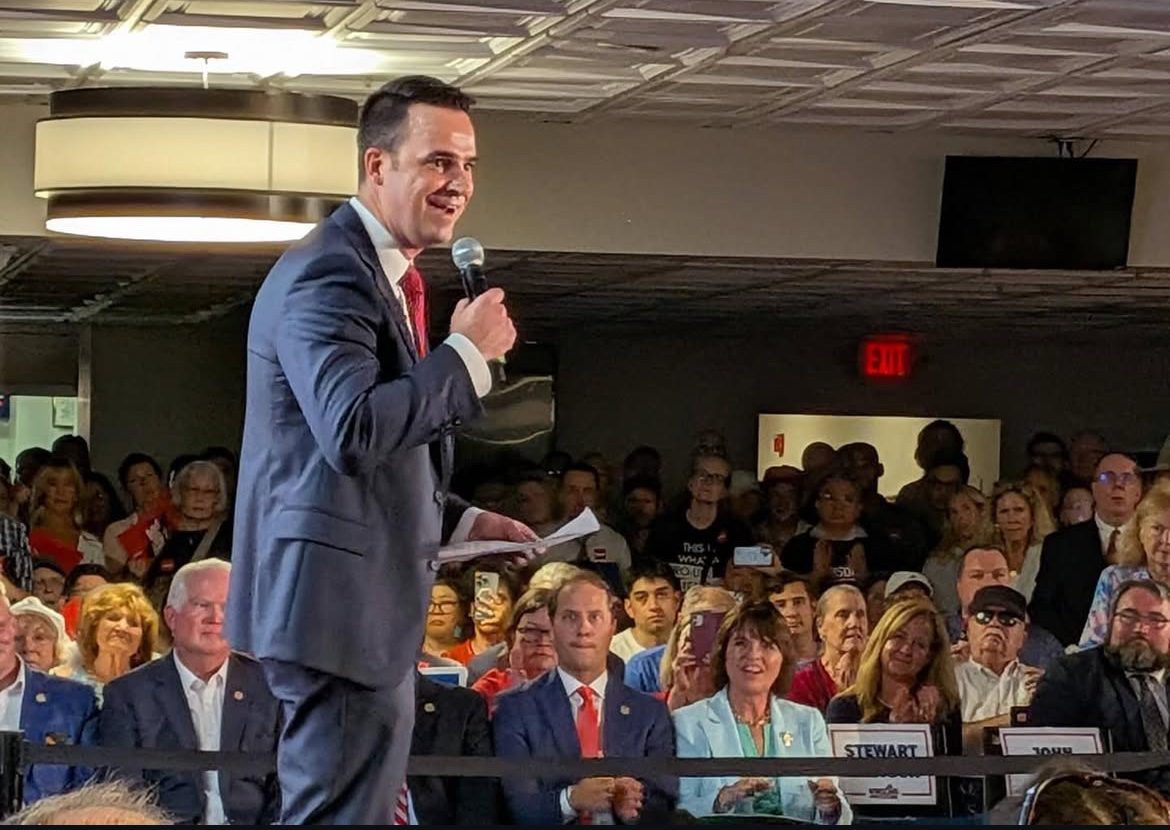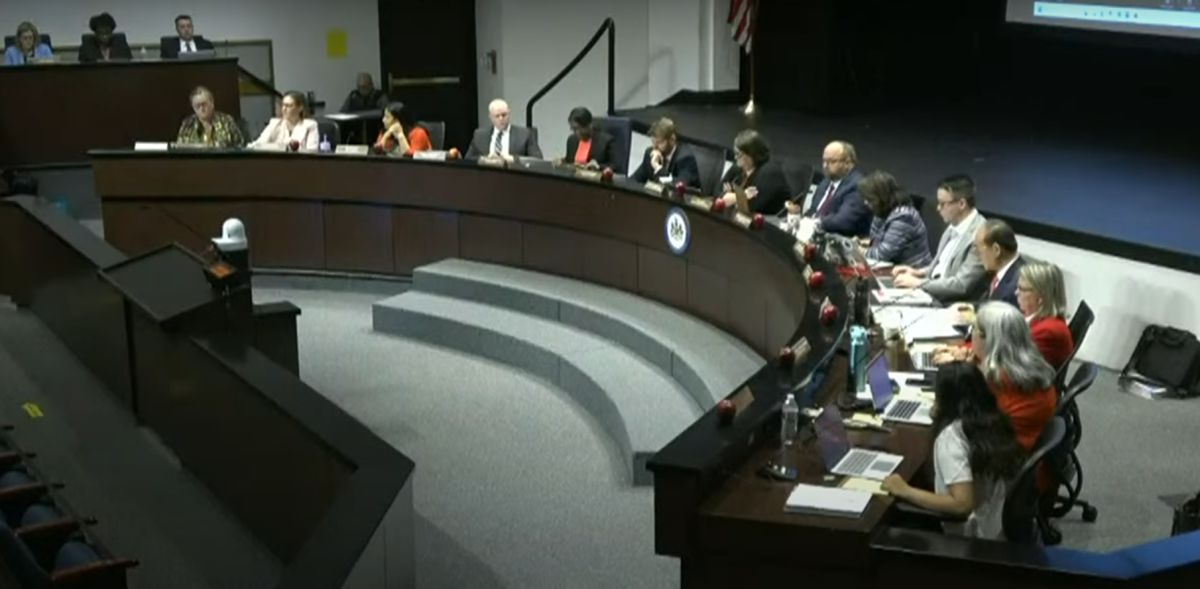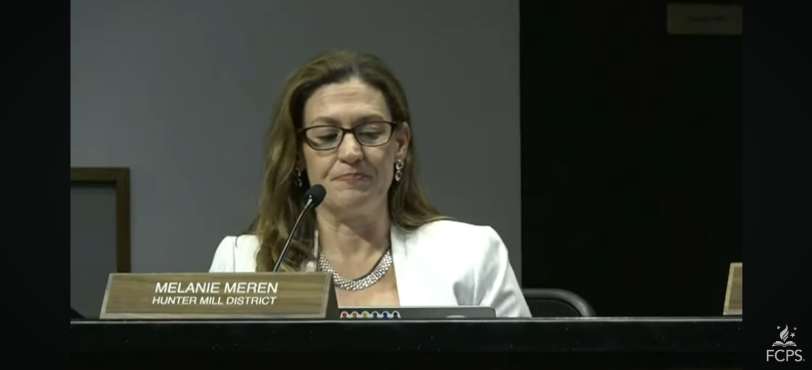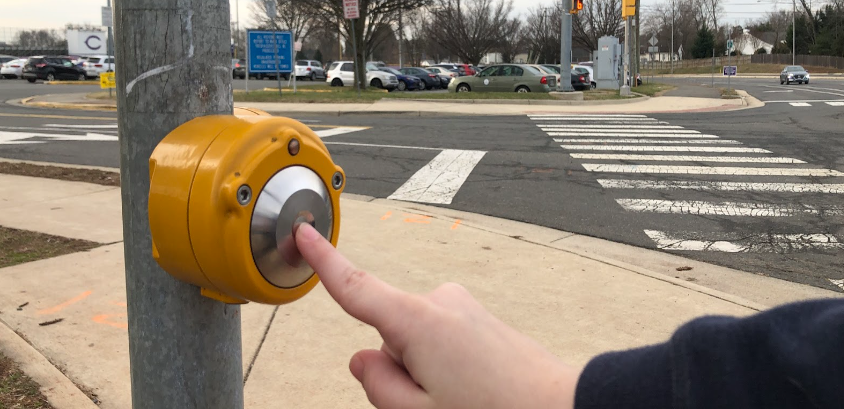
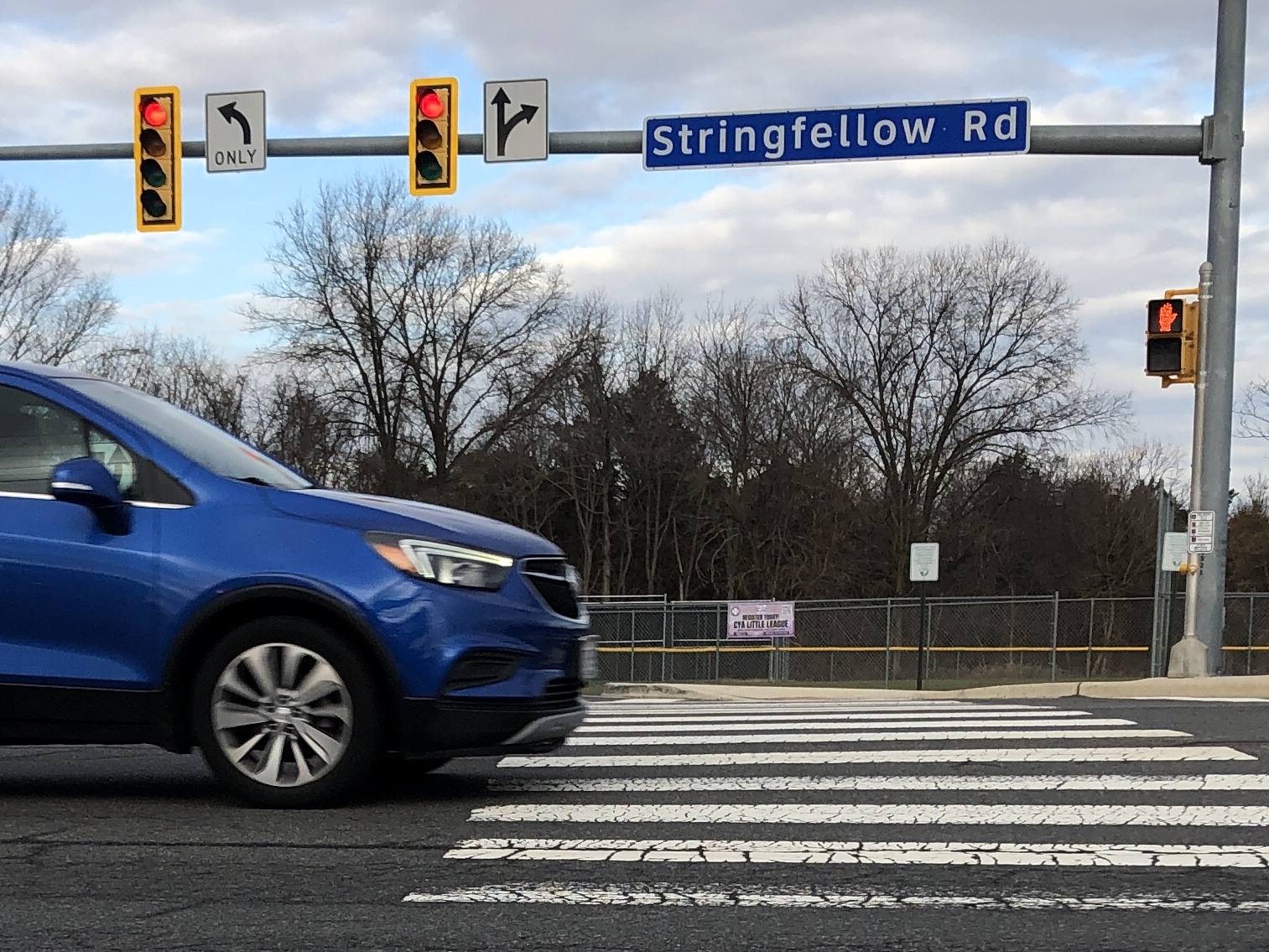
Approximately 63 CHS students park across Stringfellow Road at the Chantilly Regional Library each day, and at the height of CHS’s morning and afternoon traffic, these motorists become pedestrians, crossing the six-lane road to school.
The positioning of the library places it between two crosswalks without one of its own, meaning students have three options: cross at the south entrance to the CHS parking lot, cross at the intersection of Stringfellow and Route 50, or make an illegal crossing for the shortest but most illegal way to school.
“Over the years, there has been some exploration and wondering if we might be able to get an additional crosswalk and signage from where the library entrance is to our entrance closest to door two because so many students cross in that area and we have parking on the other side of the street,” principal Amy Goodloe said. “From a safety and security perspective, certainly it would facilitate safe crossing, especially if it was signed with the blinking crosswalk signage.”
CHS administration convened with district officials at the county level who echoed their beliefs, but were unable to actually install a crosswalk of their own.
“Safety and security for FCPS doesn’t have control over that,” Goodloe said. “We’ve had safety and security for FCPS come and look at our arrival; they definitely share our concerns, but it’s my understanding that because that is on a road that is not owned by Fairfax County Public Schools, that Virginia Department of Transportation would be the governing body that would make that decision.”
Stringfellow Road is controlled by the Virginia Department of Transportation (VDOT), meaning the crosswalk installation contains a few pit stops. The process starts with a simple online request at my.vdot.virginia.gov where anyone can draw attention to anything from a simple pothole to a more involved project like a crosswalk.
“That’s probably the easiest, simplest way because that goes to our customer service center and they will forward along as need be,” communication manager for VDOT Northern Virginia Alex Liggitt said. “They may send it along to traffic engineering [or] they could send it higher up the line to someone in leadership so it just gets more eyes involved.”
From there, in the case of something like a crosswalk installation request, VDOT proceeds with a traffic study. Here, traffic engineers collect data on the location in question such as how far away other crosswalks are, traffic volume on the portion of road and the overall safety of the area.
VDOT already did a traffic study on Stringfellow Road 15 years ago after a collision when a student pedestrian lost her leg to a Fairfax Connector bus. According to Liggitt, they found this portion of Stringfellow sees 19,000 vehicles per day and that the proposed crosswalk would be just around 600 ft away from another crossing, meaning VDOT may deny the request, citing their preference to keep crossings 500-600 feet apart.
“But also, they’re just looking at the road itself as far as vehicle speeds too,” Liggitt said. “Since one [intersection] is signalized, they also take that into account as far as safety concerns because the crosswalk that you are trying to request may not be quite as feasible.”
In the case of the collision in 2006, officials took immediate action. Professionals from the Fairfax County Police Department, FCPS, VDOT and Michael Coyle, chief of staff in the office of supervisor Kathy Smith, convened together to explore possible solutions.
“A lot of folks were reaching out because they wanted something to be done to enhance the safety of that corridor along Stringfellow Road,” Coyle said. “We did conduct a meeting at Chantilly High School and the big part that came out of that meeting was that folks wanted VDOT to look at that main entrance to the school for a traffic signal. We worked with VDOT that did a traffic signal warrant study. After they did that study, it did show that that intersection did meet the warrants for a traffic signal and so then we worked with VDOT on getting that installed.”
The outcome of that traffic signal warrant study was the installation of the light-controlled intersection at the south (main) entrance to campus. As Coyle recalls, this addition was funded by the state.
This is the first installation of a three-part series.

A Fairfax Connector bus hit a CHS student approximately 15 years ago, forcing her to amputate a leg. Now, as the 2023-24 school year comes to a close, administration continues working to ensure history doesn’t repeat itself.
The last time the Virginia Department of Transportation (VDOT) modified the portion of Stringfellow Road outside CHS was in response to the aforementioned collision. Since then, the school’s population has almost doubled in size and now 63 students park their cars across Stringfellow Road at the Chantilly Regional Library.
According to communications manager for the VDOT Northern Virginia District Alex Liggitt, traffic engineers have already performed a traffic study for this portion of road in the past—though he did not specify when. Liggitt said VDOT does not produce formal reports on the traffic studies they do. Instead, he describes it as a “casual” process in which data is stored in emails, phone calls or voicemails.
“We are often asked by citizens to provide a ‘copy of the report’ since they assume that the depth of their concern rises to the level of requiring such an action,” Liggitt said in a Feb. 9 email. “However, a very high percentage of the inquiries that we receive involve requests for conventional traffic control devices. In these circumstances, there is already guidance regarding the application of the various devices to assist in a streamlined and efficient assessment process.”
In the last traffic study, traffic engineers obtained two numbers: how many cars drive through this portion of road at peak travel times (19,000) and how far away the proposed crosswalk would be from the other two existing ones (approximately 600 ft). But Liggitt’s clarification only raises more questions for principal Amy Goodloe.
“My wondering is if there have been quite a few concerns raised about safety and need for additional crosswalk and signage which this quote might imply, what has VDOT’s response been and what is the guidance regarding an additional crosswalk?” Goodloe said. “I could argue that this is highly concerning in that we’re in a school zone across from a large public library accessed by a huge part of our Fairfax County population and due to traffic concerns and high volume on Stringfellow road that this would be a significant priority.”
Meanwhile, another request for a crosswalk and rectangular rapidly flashing beacon (RRFBs), casually known as a pedestrian signal, was made to VDOT. Traffic engineers refused to install either of the devices, citing unfavorably high traffic and low pedestrian volume, but leaving numbers that would justify these installations unsaid. According to a VDOT traffic engineer, the department does not install RRFBs, but the Fairfax County Department of Transportation (FCDOT) does in places with high pedestrian traffic under VDOT recommendation. The Purple Tide reached out to FCDOT but they were unavailable for comment.
According to Michael Coyle, Chief of Staff in the office of Sully District Supervisor Kathy L. Smith, the Virginia General Assembly passed legislation in 2013 that allowed for additional money collected through sales taxes to go to the northern region of the state for transportation projects. One of the duties of FCDOT is to review projects the department believes need to be done and request regional funding for them. But even with this additional money floating around, Coyle says funding is still a very real concern.
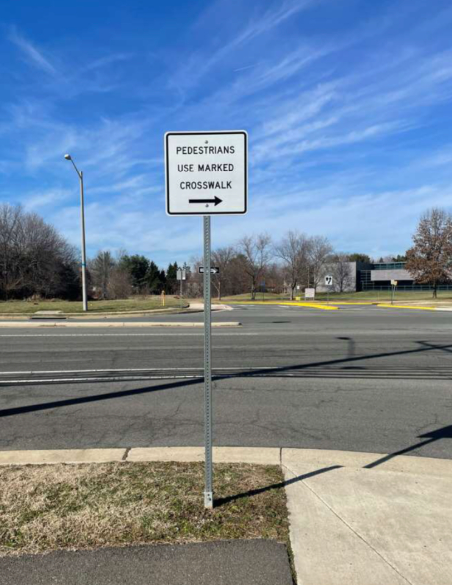
“There are lots of transportation needs, but there’s not enough funding for all of them,” Coyle said. “There are lots of projects that are worthy of funding, but because the funding is scarce, we’re only able to do certain ones at certain times and something that is a very good project to do, a very worthy project to do, just may not get funded in that current funding round. So it’s not that folks aren’t listening and they don’t see the value in that project, it’s just that there’s only so much funding.”
While things progress, Goodloe continues to keep her eyes on the prize with student safety at the forefront of her mind.
“I just want us to continue this conversation and make sure that we reach out to those who can help us ensure that there’s safe arrival and dismissal for our students,” Goodloe said.
From here, financing options are being explored and The Purple Tide will continue to report on the issue. Check back next month for the third and final part of the series.
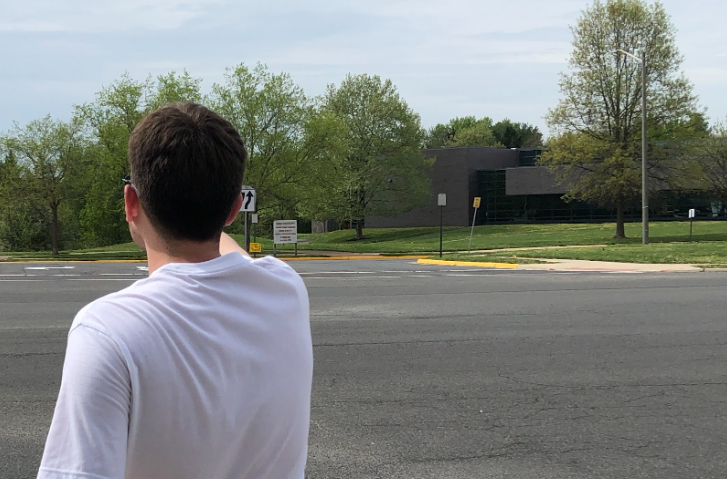
Anyone who’s ever thought about driving past CHS during arrival or dismissal times likely thought again. Morning commuters see daily backups from Route 50 to campus and not only may drivers experience delays, but pedestrians can be unsafe.
The Purple Tide has been reporting on CHS administrators’ desire for an additional crosswalk from the Chantilly Public Library to CHS since January, but it’s not just the staff who are fighting for safety: students want it too. Enter junior Ian Labas who, after harboring a number of campus concerns, reached out to FCPS for help.
The overcrowding in CHS’s building has overflowed to the parking lot and now, 63 students need to park across Stringfellow Rd at the Chantilly Public Library. So at the height of the morning rush hour and when the school day ends, these students can either walk approximately 600 ft out of their way to use an existing crosswalk, or, they can cross illegally. Labas recognizes that the rush to make it to school on time plays a part in the unpredictability of the north entrance, but doesn’t agree it’s the only issue.
“Morning commuters, whether that be a CHS student or employee have to rush to get into the parking lot and the rush to get to school in time makes them more impulsive,” Labas said. “So I would agree that that is an issue but having a proper crosswalk there would help so you can still get on time safely without risking your life.”
At 2:30 p.m. on April 12, principal Dr. Amy Goodloe took a seat at her desk and joined a Teams call which was scheduled to address Labas’s concerns. Goodloe briefed Michael Coyle, Chief of Staff in Sully District Supervisor Kathy Smith’s office; Peyton Onks, senior aid to Springfield District Supervisor Pat Herrity; and Meredith Corwin, Deputy Chief of Staff to Herrity, on the events that had occurred since January.
Goodloe stated that 63 students park across Stringfellow Road at the Chantilly Public Library each day and because the nearest crosswalk to the library is approximately 600 ft away, most students elect to cross the street illegally, creating a situation which CHS staff and students almost unanimously agree is dangerous, as depicted in a Knightly News segment from Sep. 26 on pedestrians in the parking lot. Goodloe believes it is not the teenage drivers, but the number of motorists and the parents who drop students off at the median that make this intersection so unsafe. But above all, Goodloe stressed her belief that this is a dangerous intersection.
”Someone is going to get [seriously hurt] out there,” Goodloe said in the April 12 meeting. “That’s the bottom line.”
The meeting’s attendees explored the possibility of instructing students to park elsewhere, yet Goodloe said it was impossible as the CHS parking lot is not large enough. They looked into adding language in the parking contract that requires students to cross at existing crosswalks. Creating rules requires follow-through though, meaning staff members would need to be posted at the intersection to enforce the language in the contract. In addition, more eyes on the street means fewer on the building with less certainty that it is secured when the school day starts.

“You can’t rely on kids to have proper judgment when we don’t even have a fully-developed prefrontal cortex,” Labas said. “So to think that a contract could work, to think that kids would actually follow the protocol, will not work without the proper authority directing them in that way.”
Additionally, as discussed in the April 12 meeting, a crosswalk at this intersection would only be safe if it were monitored by a crossing guard. This means that when the crossing guard is not present, such as times outside of arrival and dismissal, the crosswalk still remains, now unsafe. According to Goodloe, pedestrians cross this intersection outside of school hours, whether on their way to or from the library, to the Fairfax Connector bus stop or elsewhere.
According to Onks, the sight of a crosswalk is an invitation to cross, but because the proposed crosswalk would no longer be safe after a crossing guard has left, it could create more danger than safety outside of peak travel times. Those present at the meeting determined that, while the intersection is dangerous, a new crosswalk there would be too. They plan to continue exploring more options that are safer for the uncontrolled intersection.
”This is clearly a safety issue for the students that we have to address in some way,” Corwin said.
The Purple Tide explored a few other pedestrian options for the north entrance to campus.
When pedestrians cannot walk across the street, traffic engineers sometimes opt for a bridge that directs pedestrians up and over the road. But according to Coyle, both the space a bridge would take up and the cost to construct it make it unfavorable for this location.
First, it would need to be compliant with the Americans With Disabilities Act and therefore include a ramp with a slope of 1:12 or shallower. But because the bridge would need to rise high enough for large vehicles to pass underneath (14 ft, according to the Federal Highway Administration), the ramp would be at least 172 ft long. With this in mind, whoever funds the bridge would need to acquire the land on either side of the road.
“The biggest challenge to constructing the bridge is the cost,” Coyle said in an April 19 email. “They come with a hefty price tag. Our office is working on a trail project that will require a bridge over a stream and the estimated cost is $8 million.”
With pedestrian bridges out of the question, The Purple Tide then considered pedestrian crossing flags. Salt Lake City, Utah’s Adopt-A-Crosswalk program installs brightly-colored pedestrian flags on the corners of some intersections. When a pedestrian would like to cross the street, they simply retrieve a flag from the container and display it for motorists to see while they make their way to the other side.
Fairfax County does not currently have an official program like Salt Lake City’s Adopt-A-Crosswalk. According to Coyle though, maximum visibility is encouraged.
“I’m aware of some parts of the country that encourage pedestrians to carry/wave bright colored flags when they cross the street to be more visible,” Coyle said in the April 19 email. “There seems to be mixed results on the effectiveness. That being said, similar to pedestrians wearing bright colored or reflective clothing at night, the goal is to make the pedestrian more visible to the motorist.”
While he understands the economic and time factors involved in modifying a busy intersection, Labas urges officials to work quickly with student safety in mind.
“Don’t wait; be proactive,” Labas said. “That time and money is not worth more than human life, so to spare time and cash? A girl was hit and lost her leg, nearly lost her life. Do you want to wait for that to happen [again] or have the idea that if it does happen, then we’ll step in? Do something now. Waiting for something to happen is no better than doing nothing at all.
Your donation will support the student journalists of Chantilly High School. Your contribution will allow us to cover our printing and annual website hosting costs.
